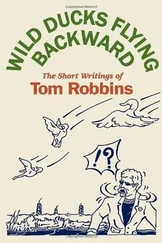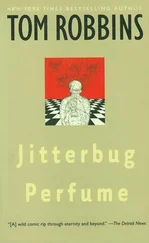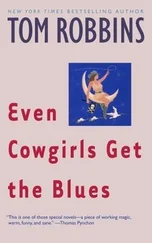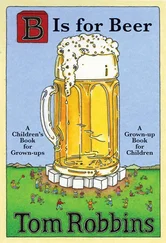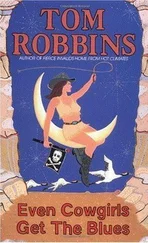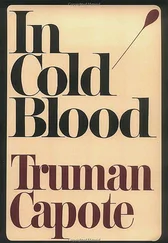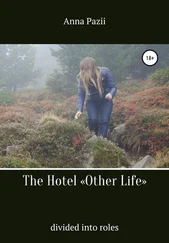There was yet another feature attractive to impecunious creative types. Or maybe just to me. Immediately to the east of town were seemingly endless fields of vegetables: cauliflower, cabbage, spinach, and beets, grown not for the fresh produce markets but for seed, and thus left unharvested for conveniently long periods of time. Convenient, that is, for Terrie and me, who regularly would embark on midnight produce raids. Having quit the P-I to concentrate exclusively on my second novel, I’d become, by circumstance, unfamiliar to the cashiers at Thrifty Foods and Safeway. Our pillage, while not really putting a dent in any farmer’s crop, provided needed nourishment and even a taste of romantic adventure, the ever-present risk of apprehension offset by the almost surreal beauty of the fields, where long rows upon rows of cabbage, rotund and silvery in the moonlight, suggested the marbles in a game of Chinese checkers set up for the amusement of the Jolly Green Giant.
Keith and Maxine Wyman, the older couple who’d introduced me to the pleasures of the mushroom hunt, the bird watch, and the bacchanalian salmon barbecue, and who’d become in a sense my surrogate parents, had finally found a small but charming house I could rent in La Conner, and Terrie and I moved into it on April 1, 1970. (I recommend that you make all of your major moves on the first of April. Just in case.) That September, as the cabbage went to seed, spelling an end to our surreptitious agricultural subsidies, the ARA advance money arrived from Doubleday. For Terrie, I filled a larder with conventionally procured supplies. Then I bought myself an airline ticket to Tokyo.
Ever since my troop ship sailed out of Yokohama Harbor in late 1955, I’d longed to return to Japan. It was that longing that had lured me to Seattle, where, I’d hoped, graduate study at the UW Far East Institute could lead to work as a correspondent in Asia. I’d been waylaid by visual art, a consuming seductress, but now here I was, fifteen years later, buying my own ticket to that weird and exquisite land where jujitsu warriors wrote nature poems, stunningly sexy women kept crickets as pets, and nary a geisha would raise a plucked eyebrow should I decide to chow down on a chrysanthemum. It wasn’t merely a rainbow chase, however; I had a legitimate, practical reason for flying to Japan: as research for my second novel, I needed to see some whooping cranes.
Now, you needn’t be an ornithologist to know there aren’t any whooping cranes in Japan. Ah so. Whoopers — and there was only one small, imperiled flock of them extant in 1970 — summer at a remote lake in northern Canada, winter on a protected island off the Texas coast. In neither location was it possible to get close enough to view them in any meaningful way. There is, however, a somewhat compact version of “our” majestic crane that summers in Siberia and spends the rest of the year in northernmost Japan, where, at a park near the city of Kushiro, they can be observed without the aid of binoculars. Known as the tancho zuru, this bird has identical markings to its larger North American cousin, which is to say black wing tips and a bright red “skullcap.” (By the time the bird guys got around to naming cranes, I guess “cardinal” had been used up, though for all I know tancho zuru means “pope” in Japanese.)
In the novel I’d just begun, whooping cranes were to serve both as hostages and as living inspiration for the illegal occupiers of the largest all-girl ranch in the west, the birds chosen (doubtlessly in a spasm of anthropomorphism) for what I perceived as their conscious, defiant decision to risk extinction rather than conform; rather than alter their ancient patterns of behavior to accommodate the gassy, brassy intrusions of Homo sapiens, an invasive species that is by nature an unnatural animal. In any case, research led me to believe that the tancho zuru would serve as an adequate substitute, a visual model, for the more evasive whoopers, so I set out across the Pacific to look them over.
Darrell Bob Houston was already in Japan. He’d landed an Alicia Patterson Foundation journalism grant to study and write regular reports on the subject “Youth in Asia.” (When he first told me about it, as I was leaving the P-I, I thought he meant “euthanasia,” which not only creeped me out but struck me as odd, Japanese being traditionally so well versed in hara-kiri they shouldn’t require outside help in ending it all.) Darrell Bob met my flight and after a copious introduction to Asahi beer at a sushi joint, he set me up in the tiny one-room apartment he’d rented as writing-studio-cum-love-nest for trysts with his Japanese paramour, Yoko. (Not that Yoko.) My Tarzanesque pal was married, you see, and his Seattle family had recently joined him in Tokyo.
The room was in Otsuka, a working-class district, and it sat above a kind of greasy chopstick restaurant named Ichi-ban. It was in that plain but self-aggrandizing eatery ( ichi-ban in translation is “number one”) that I took my nightly dinner as I waited for D.B. and Yoko (she lived with her parents in an upscale neighborhood) to find time to accompany me on my hunt for the surrogate whooping crane. After dinner, night after night, as typhoon-season rains drenched Tokyo, I’d sip beer and watch European (including Czech and Yugoslavian) movies with Japanese subtitles on the Ichi-ban’s twenty-four-inch black-and-white TV.
One night the feature film was American. A World War II drama about U.S. airmen flying missions over Germany (Japan’s wartime ally), its dialogue had been dubbed so that the American pilots were all spouting Japanese. Sitting there by myself amidst a scattering of non-English-speaking trolly workers, drinking Asahi and watching a global hodgepodge of a movie while a furious rain lashed the cement-and-rice-paper facade of that dingy building alongside the tracks, I don’t think I’ve ever felt more disoriented and alone. Or more thoroughly, serenely, at home. Every true romantic will know what I mean.
In Japan, my typical ensemble included faded jeans, rodeo shirt, leather vest, black cowboy hat, and a short, stiff lasso with which any suburban New Jersey tenderfoot could have performed ersatz rope tricks. Why? I’d had the dumb idea that the Japanese would be as surprised and delighted to encounter an American cowboy in their midst as an American might be to come across a friendly samurai warrior on the streets of, say, Cheyenne or Little Rock. Wrong! Oh, they were surprised all right, but that turned out to be the problem.
Whenever I met someone on the street, he or she would immediately avert their eyes. Occasionally, pedestrians would stop dead in their tracks and turn their back on me until I had safely passed them by. The first time I rode the train, the person I sat down next to rose and moved to the far end of the car. When, with a puzzled expression, I looked to the passenger on my other side for sympathy or at least an explanation, he got up and moved, as well. Such rejection became a regular occurrence. Did the citizens of Tokyo harbor a deep-seated hatred of cowboys? Did they blame Hopalong Cassidy and Billy the Kid for bombing their city back in the forties? Wasn’t the great film director Akira Kurosawa heavily influenced by American westerns?
As I was soon to learn, the Japanese are not a spontaneous people. The Japanese are not fond of surprises. As emotionally fettered by their ancient traditions as they are aesthetically enriched by them, Japanese stoically recoil from any public display of feeling, or any event that might catch them off guard and precipitate a perceived loss of face. They’ve loosened up noticeably in recent years, but in 1970, loss of face remained a fate next to death. All that legendary politeness? The truth is, when the Japanese bow and mutter, “So sorry, so sorry,” what they are really saying is, “Ten thousand curses on me for ever finding myself in a position where I am indebted, however slightly and briefly, to you .”
Читать дальше

